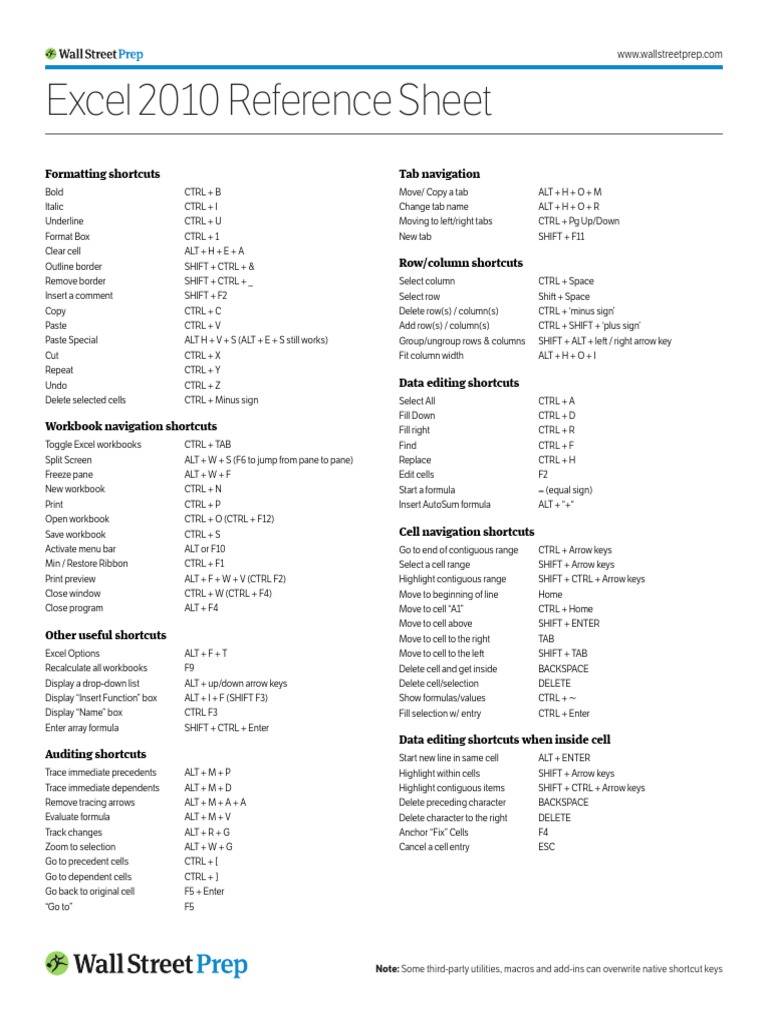
Shift + arrow keys : Highlight sections one character at a time.This can be useful when you want to make precise changes, or changes to a group of letters or cells. Highlight or performing selection is the first action you’ll take before making any changes to the selected items. Down Arrow : Move one letter or cell down Highlight.Right Arrow : Move one letter or cell to the right.Left Arrow : Move one letter or cell to the left.Ctrl + (Right arrow) : Move one word to the right at a time.Ctrl + (Left arrow) : Move one word to the left at a time.Ctrl + End : Go to the end of a document.Ctrl + Home : Go to the beginning of the document.End : Go to the end of the current line.
 Home : Takes the user to the beginning of the current line. Shortcut keys that can help to get from point “A” to point “B” without the use of your mouse can be very useful for laptop users. Ctrl + Z : Undo the previous action Navigation. Ctrl + Y : Redo the previous action Advertisements. Correcting MistakesĬorrecting any mistakes you’ve made on the fly, these shortcut keys can save you a lot of time. Alt + E : Edits options in the current program. Alt + F : File menu options in the current program. F1 : Universal help (for any sort of program). Quickly finding help and changing your setting without a mouse is the difference between a beginner and an expert user. Alt + F4 : Quit current program Help and Setting. Ctrl + F : Find and replace the dialog box. Ctrl + P : Print current file Advertisements. Simple but powerful common Microsoft office shortcut keys that can be used across all applications designed by Microsoft. If you are an advanced user (or want to be one) this list of most common Microsoft shortcut keys is a must-know. OneNote: Taking pages of important notes on the go.Īdvantage of working with Microsoft Office suite means you can use the same keyboard shortcuts in all Office applications to boost your productivity to the next level.
Home : Takes the user to the beginning of the current line. Shortcut keys that can help to get from point “A” to point “B” without the use of your mouse can be very useful for laptop users. Ctrl + Z : Undo the previous action Navigation. Ctrl + Y : Redo the previous action Advertisements. Correcting MistakesĬorrecting any mistakes you’ve made on the fly, these shortcut keys can save you a lot of time. Alt + E : Edits options in the current program. Alt + F : File menu options in the current program. F1 : Universal help (for any sort of program). Quickly finding help and changing your setting without a mouse is the difference between a beginner and an expert user. Alt + F4 : Quit current program Help and Setting. Ctrl + F : Find and replace the dialog box. Ctrl + P : Print current file Advertisements. Simple but powerful common Microsoft office shortcut keys that can be used across all applications designed by Microsoft. If you are an advanced user (or want to be one) this list of most common Microsoft shortcut keys is a must-know. OneNote: Taking pages of important notes on the go.Īdvantage of working with Microsoft Office suite means you can use the same keyboard shortcuts in all Office applications to boost your productivity to the next level. 
Microsoft Teams: Setting up Virtual Meetings and messaging your colleagues.
 Microsoft Excel: Analyzing hundreds and thousands of data. Microsoft Word: Creating professional error-free documents and reports. Microsoft PowerPoint: Crafting beautiful presentation slides. If you are working on your laptop or computer, chances are that you’ll be spending a lot of time working on the Microsoft Office suite (Microsoft 365).
Microsoft Excel: Analyzing hundreds and thousands of data. Microsoft Word: Creating professional error-free documents and reports. Microsoft PowerPoint: Crafting beautiful presentation slides. If you are working on your laptop or computer, chances are that you’ll be spending a lot of time working on the Microsoft Office suite (Microsoft 365).







 0 kommentar(er)
0 kommentar(er)
